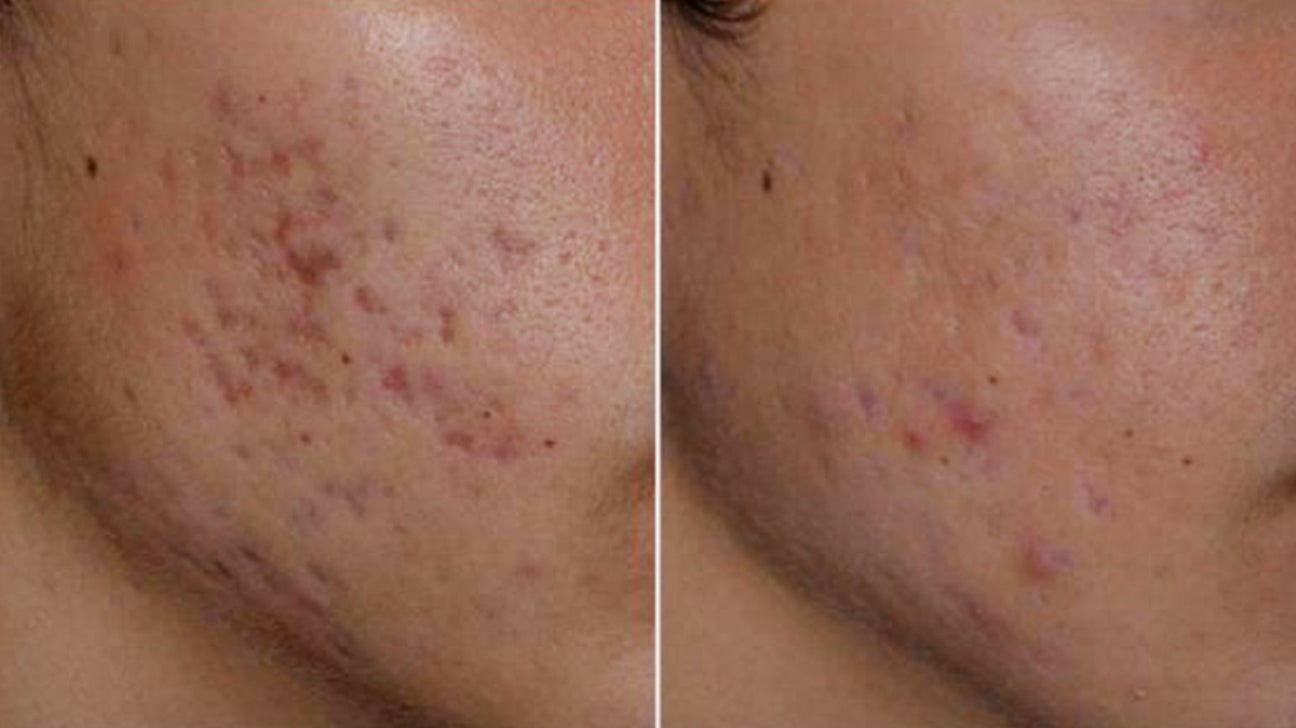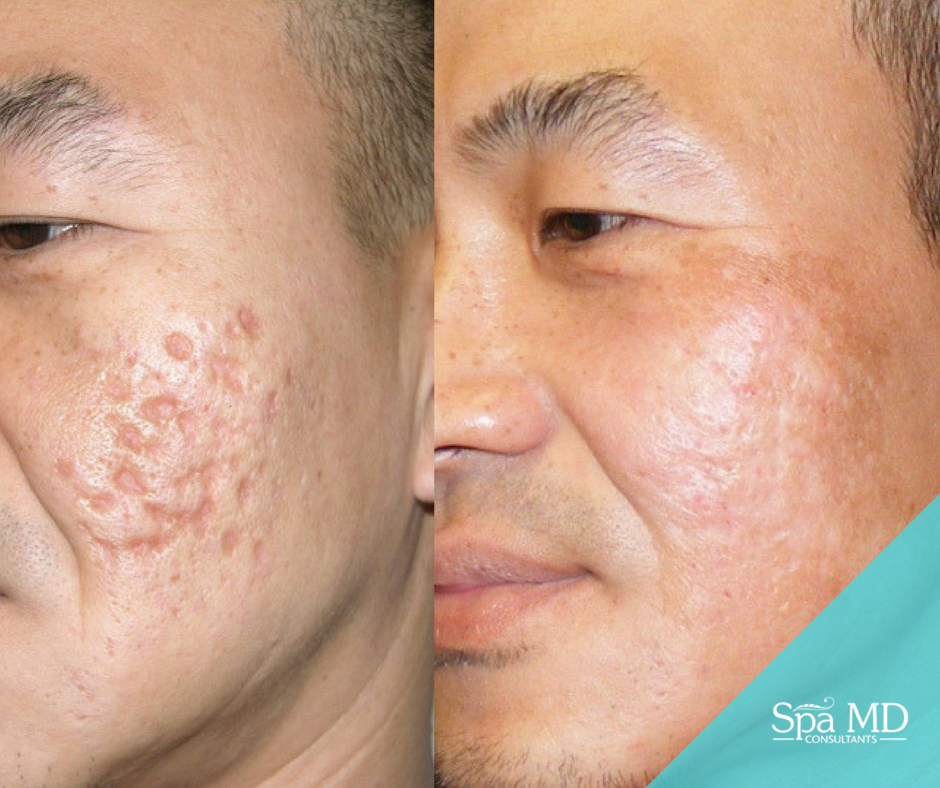Our Acne Scars Statements
Table of ContentsSome Known Factual Statements About Acne Scars A Biased View of Acne ScarsNot known Facts About Acne ScarsGetting My Acne Scars To WorkThe Facts About Acne Scars Revealed
Raised acne marks take place when the body generates as well much collagen and form a visible bump. As we age, acne marks become extra visibly due to the fact that our skin loses collagen. Some individuals are most likely to see marks than others. According to Dr. Garvey, the danger increases when: An individual has inflammatory acne such as acne cysts.A person delays treatment for inflammatory acne. The longer you wait to seek therapy for acne, the higher the danger of scarring. A person chooses at, presses or pops acne. When popping an acne, you press microorganisms deeper into pore. If we didn't need another reason why not to pop a pimple, understand that a mark can be the straight outcome of your actions.
Your genetic makeup plays a huge function in how much acne, and what kind of acne you might develop. As we said previously, there is no magic component to take acne marks away in the blink of an eye. There are therapies readily available that assistance decrease the scarring in time.
To carry out acne mark surgery, a skin specialist may raise the scar, bringing it closer to the surface area of the skin to make it less noticeable. best for acne marks that are nearly flat. These therapies consist of laser skin resurfacing, chemical peels and microdermabrasion. Resurfacing gets rid of layers of the skin, which allows the body to produce brand-new skin cells.
Some Known Details About Acne Scars
Lasers and other light treatments can treat elevated marks safely and successfully. (PDL) can aid lower the itch and discomfort, reduce shade, and flatten an elevated mark.
After 3 needling treatments, there was enhancement in the appearance of acne marks over time contrasted with the control team, with very little discomfort reported - acne scars. Treatment of acne scarring remains a restorative difficulty, with treatment techniques that consist of an array of feasible alternatives.
Nonablative and ablative lasers can be utilized to either remove or bore skin in a fine determine pattern, with resulting neocollagenesis; only a fraction of the skin is treated with each treatment, and a collection of treatments are called for to deal with the entire affected surface. It has been suggested that neocollagenesis and improvement of acne marks can additionally be achieved making use of needle rollers, which make use of a mechanical, macroscopic strategy to induce little epidermal and facial openings.
See This Report on Acne Scars
Like paint rollers, such tools can be relocated back and forth along the skin. Needling as a possible therapy for acne scarring was introduced by Camirand and Doucet, who explained usage of a tattoo weapon to abrade acne scars.
At each of these visits, needling was carried out on the research therapy area, and topical anesthetic was just rubbed into the control area. Digital photographs and damaging occasions (eg, infection, prolonged erythema, prolonged edema, serosanguineous drain, blood loss, ulceration, erosion, and coloring), including their period, resolution, intensity, connection to the research study treatment, and any kind of curative actions taken, were videotaped prior to each treatment.

Discomfort degree was tape-recorded based upon a 10-point visual analog range after the treatment. Promptly after each treatment, gentle hands-on pressure with gauze was applied for 5 minutes to regulate determine blood loss view and serum secretion. The skin was saturated with saline swabs for an hour to promote hydration while the people were informed concerning the need for home treatment.
A Biased View of Acne Scars
The tool was then more cleaned by gas sterilization, stored in a shut package, and identified with the individual's name and the first treatment day on package up until the next treatment. This sanitation process was complied with to guarantee a high level of infection control in this research setup. The key outcome measure was the quantitative international scarring grading system, developed by Goodman and Baron.
Two blinded skin specialists (S.H. and M.P.) separately rated individuals' acne marks based on common electronic photos gotten at baseline and at the 3-month and 6-month follow-up check outs. Forced contract was used to reconcile scores. Offered that this was a very early pilot trial, we considered it proper to consider acne scars collectively, not independently, by different morphologic subtypes (eg, rolling, boxcar, ice choice, and so on).
and M.P.) did not join randomization or therapy and consequently had the ability to be blinded pertaining to job. Adjustments in mean scar ratings from standard to 3 and 6 months, specifically, were computed for the therapy and control arms. Repeated-measures analysis of variation with pairwise comparisons with Sidak adjustment were carried out to test whether the mark score differed on treatment type, time, or the interaction between both.
The Wilcoxon authorized rank examination was utilized to analyze whether the difference in overall acne mark look was connected with treatment type. The research study took place from November 30, 2009, through July 27, 2010. Twenty individuals consented, and 5 quit before the first therapy. The remaining 15 completed all therapies and are assessed.
The Ultimate Guide To Acne Scars
The needling treatment was not especially uncomfortable. Discomfort ratings boosted somewhat over time (P =.01), with week 4 pain scores (mean, 1.75; 95% CI, 0.90-2.60) dramatically higher than week 2 (mean, 0.78; 95% CI, 0.40-1.20) and week 0 (mean, 0.71; 95% CI, 0.40-1.00).
When asked to estimate the discomfort experienced throughout and in the days after their procedure, participants commonly reported no pain (acne scars). Many participants were extremely completely satisfied with their procedure, replied of course when asked if they would certainly do this procedure once again Look At This to deal with added marks, and said they would certainly suggest needling to their close friends
Light short-term erythema web link and edema, which were not identified as unfavorable occasions and for this reason not formally tracked, were routinely observed by the investigator (M.A.) and reported by individuals after treatments. This study discloses some enhancement in acne marks after a series of 3 therapies of needling. There is a statistically substantial improvement in such scars in the treatment team from standard to 6 months and no substantial improvement throughout this period in the control team.
